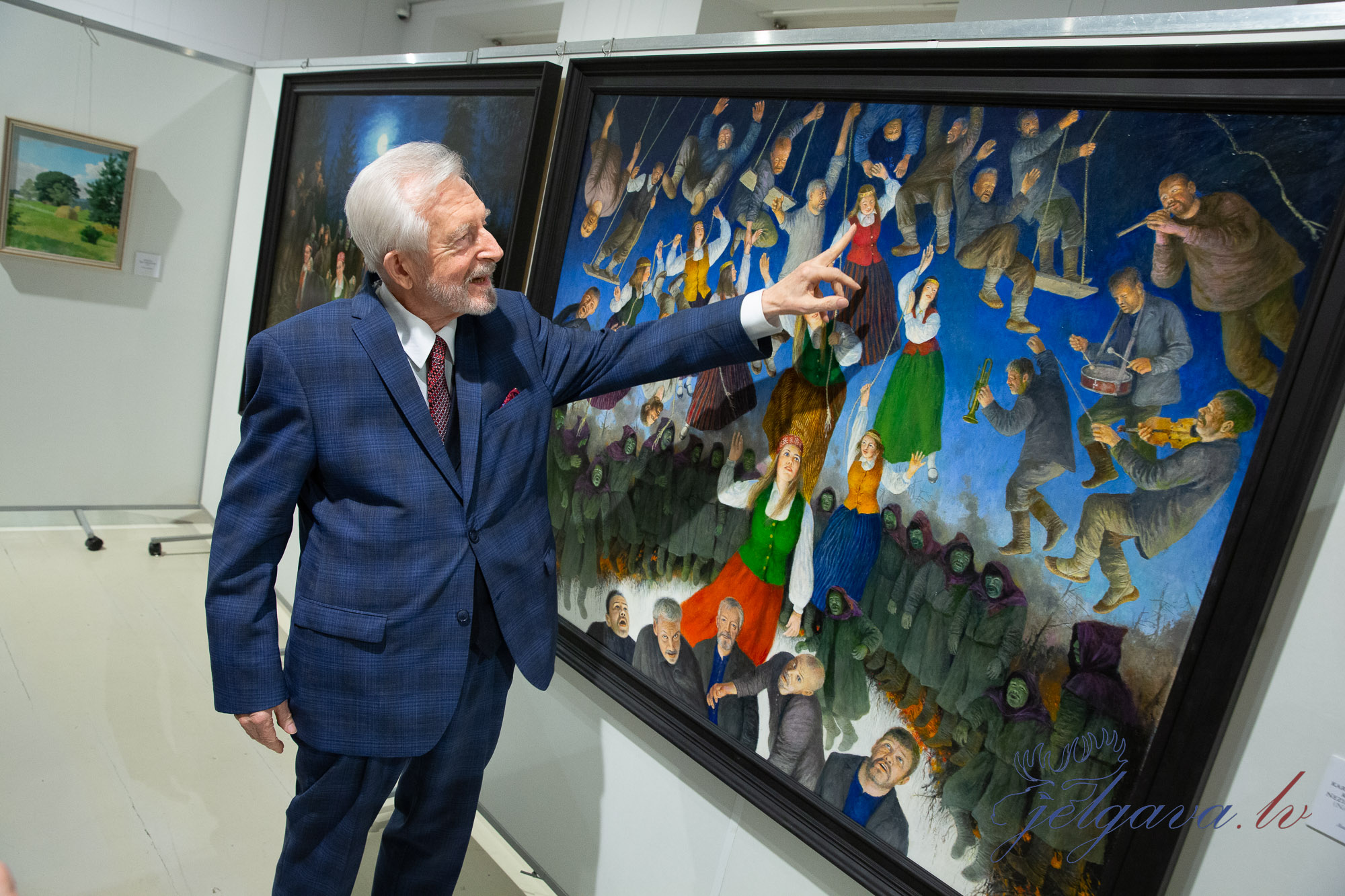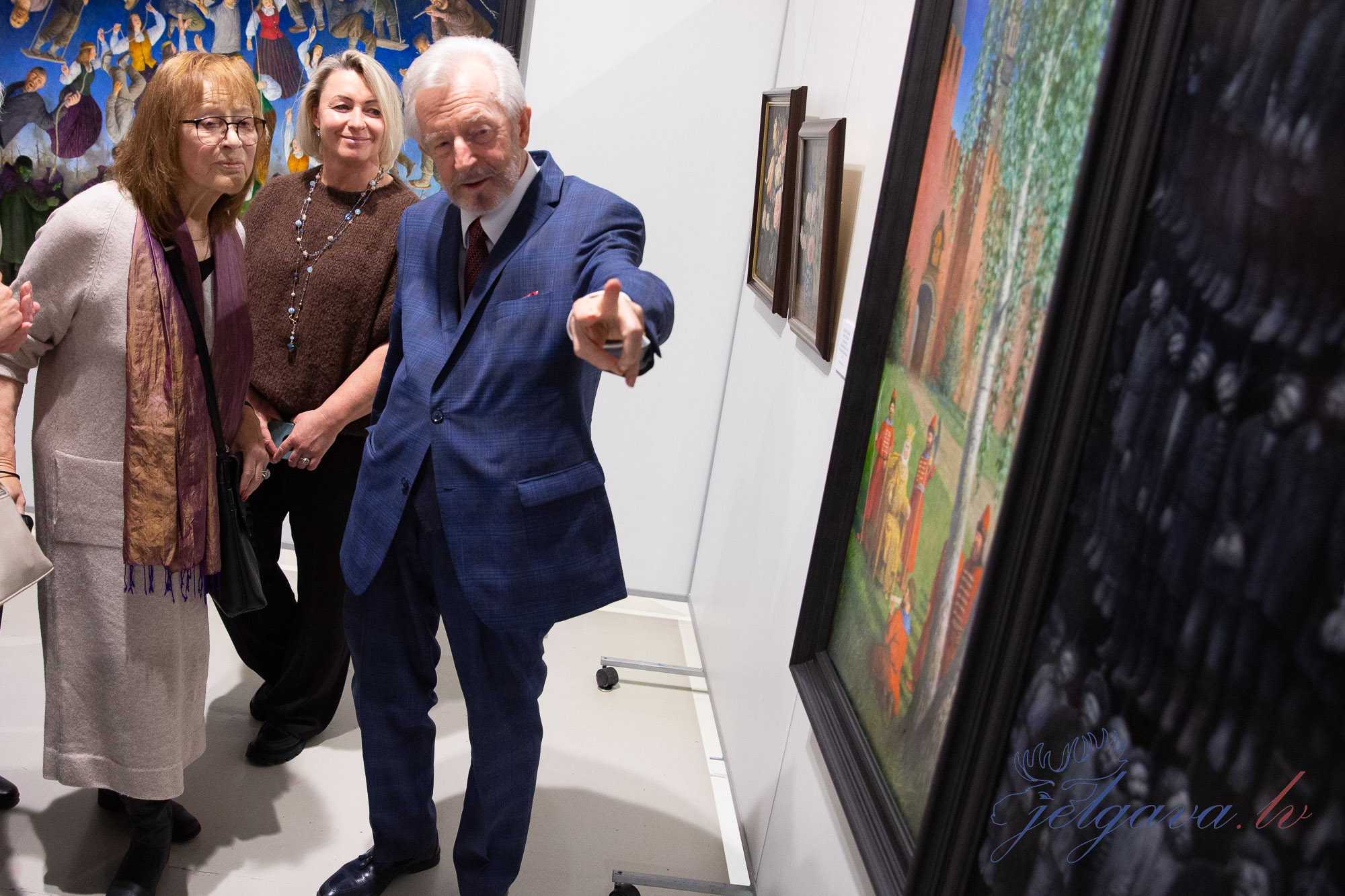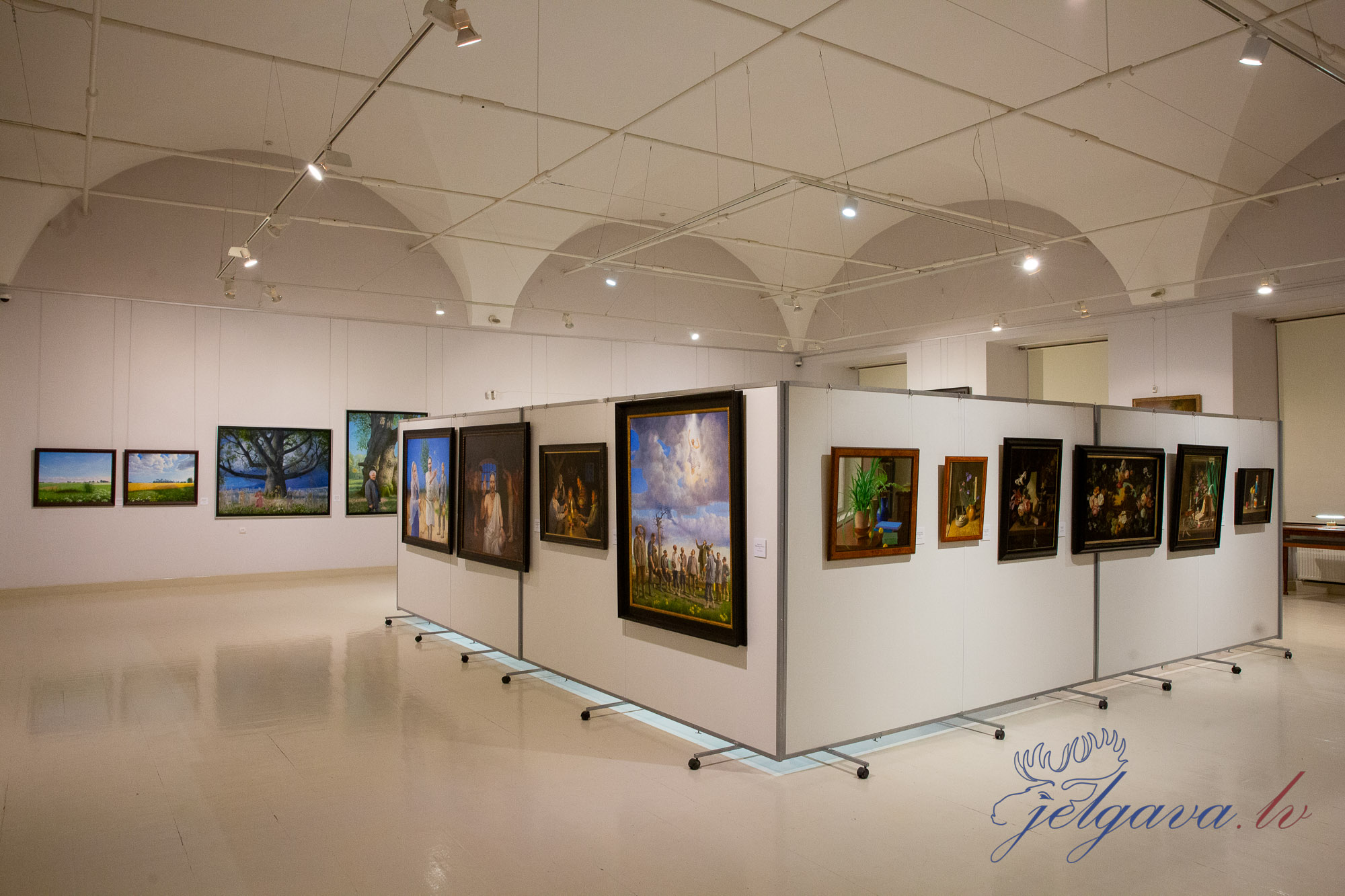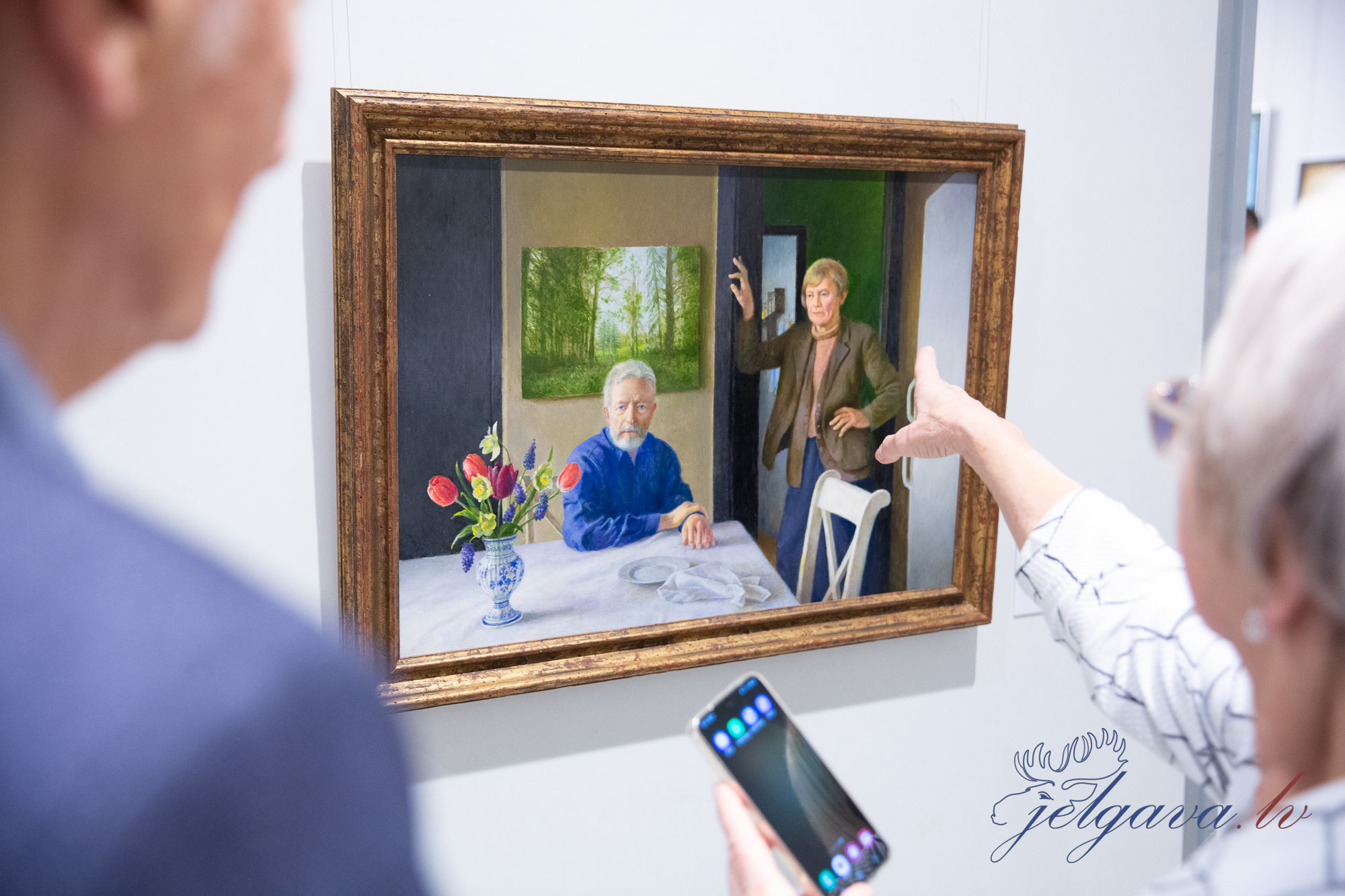News
At the Ģederts Eliass Jelgava History and Art Museum, a retrospective exhibition of Imants Lancmanis’ works titled “Imants Lancmanis’ Painting” has been opened. “62 years have passed since I declared: I need a realistic, brush-painted alternate world—a precise depiction of this world and my imagined one on canvas. Today, this remains my signature style, though the themes have changed over the years—it’s about what is important for me to express and show,” the artist Imants Lancmanis describes his exhibition. The exhibition will be on display at the museum from November 16 to January 5.

Realistic conceptual romanticism – this is how artist Imants Lancmanis defines his creative work, where a synergy is found between an enthusiastic, heightened perception of the world and vivid imagination.
The current retrospective exhibition showcases paintings created from 1958 to the present, allowing visitors to explore the artist’s refined personal style and his classical painting approach. The exhibition includes works from cycles such as “Kalētu Barn,” “Oaks of Latvia,” “Easter Visions in Latvia,” “Bible Stories,” as well as portraits, landscapes, still lifes, and compositions—a concentrated reflection of the artist’s creative journey.
Additionally, three paintings are being presented to the public for the first time.

“In painting, I cannot simply focus on depicting beautiful landscapes—I feel the need to express what I feel and think. Murders, wars, revolutions, and epidemics have the power to alter the destinies of individuals and entire nations. Therefore, in this exhibition, I continue to explore the somber theme of the Dance of Death. My new painting, bearing the challenging title ‘Peasants from the Broken Carousel Falling into the Abyss of Uncertainty Together with Death’s Soldiers,’ reflects on the unfortunate reality that suffering and calamities persist.
The Latvian peasants and the carousel symbolize the precarious situation we live in, neighboring a turbulent state, while the Abyss of Uncertainty represents the looming, unpredictable, threatening, and unsettling sense of the unknown,” the artist explains.
The exhibition also features an expanded series of paintings about Peter I. In August 1698, while in Vienna, Russian Tsar Peter I learned of a rebellion by the Streltsy regiment in Moscow. Interrupting his European travels, the Tsar returned to his homeland, where around two thousand Streltsy soldiers were publicly executed, either by beheading or hanging. The harsh punishment was a result of the rebels, in the Tsar’s eyes, embodying an obstacle to his dream of a reformed and Europeanized Russia.
“Peter’s dream came true, and Russia indeed became part of Europe. Yet today, 326 years later, tens of times more lives are being sacrificed in war for an ideal—but this time for Russia’s departure from Europe,” Imants Lancmanis reflects on this grim paradox, brought to life as an allegory for modern times in his series of paintings about Peter I.

Lancmanis acknowledges that the inspiration for such somber themes stems in part from personal experience—memories and fears from his childhood during the war in 1944 when he was just three years old. Yet, everything is kept in balance; the exhibition also includes joyful landscapes and still lifes.
“I believe it is my duty to address dark themes, but at the same time, I strive not to succumb to despair, maintaining spiritual balance. The responsibility for the world’s suffering must be countered with the pursuit of goodness and beauty. It’s essential to show that the world is wonderful—nature, the good deeds of people, and Christ’s teachings, which represent an unmatched union of morality and ideals. At the same time, I can’t stop asking the question that haunts me: why must this world be ravaged and destroyed?
That’s the essence of my work—not naive enthusiasm, but grounded in logic, argumentation, conceptual depth, and historical awareness. This allows me to look beyond what has happened to people and draw the main conclusion: though catastrophes are terrifying in themselves, they always end, and they have one beautiful characteristic—they invariably lead to renewal. It is our responsibility to act in a way that makes us worthy of welcoming that renewal,” Lancmanis explains.

Notably, Imants Lancmanis’ artistic journey experienced a hiatus during his intensive work as the director of the Rundāle Palace Museum, where he researched and documented art history and taught design principles at the Latvian Academy of Arts for 17 years. Certain sections of the exhibition highlight these facets of his creative work, showcasing the stages of painting development through photographs and sketches.
“All my paintings are driven by the need to present them in a believable way—what is now considered true contemporary art. I have to paint in fine detail, so precise that even I believe it. Not naive realism, but realism subordinated to a concept. Photography is one of the tools I use to study these details. Many of my paintings were created with my museum colleagues posing for me. Dressed in imaginative costumes, they enacted everything from Golgotha scenes to dances. That’s why I want to reveal this process of creating art to the audience,” Lancmanis emphasizes.
His work spans various cycles, from everyday scenes to intricate figurative compositions. Yet a unifying element persists—each piece invites viewers to observe, understand, and reflect.
“I am indifferent to formalist painting. One reason is that it’s hard to connect with it intellectually. It seems that with installations or abstractions, it’s harder for people to immerse themselves. In my exhibitions, there’s no need to feel bewildered because the message is visible. Yes, my painting can be didactic and moralizing, but is that a bad thing? Art, like literature, belongs to those forms of culture and civilization that are essential. They educate and encourage self-reflection,” concludes Lancmanis.
The exhibition includes works by Imants Lancmanis from the collections of the Latvian National Museum of Art, the future Latvian Museum of Contemporary Art, Rundāle Palace Museum, Bauska Museum, the Art Academy of Latvia, the Artists’ Union of Latvia, the Latvian Academy of Sciences, the Zuzāns Collection, as well as numerous private collections.
The exhibition will be on display at the Ģederts Eliass Jelgava History and Art Museum until January 5.
 3 °C,
2.4 m/s,
91.5 %
3 °C,
2.4 m/s,
91.5 % 